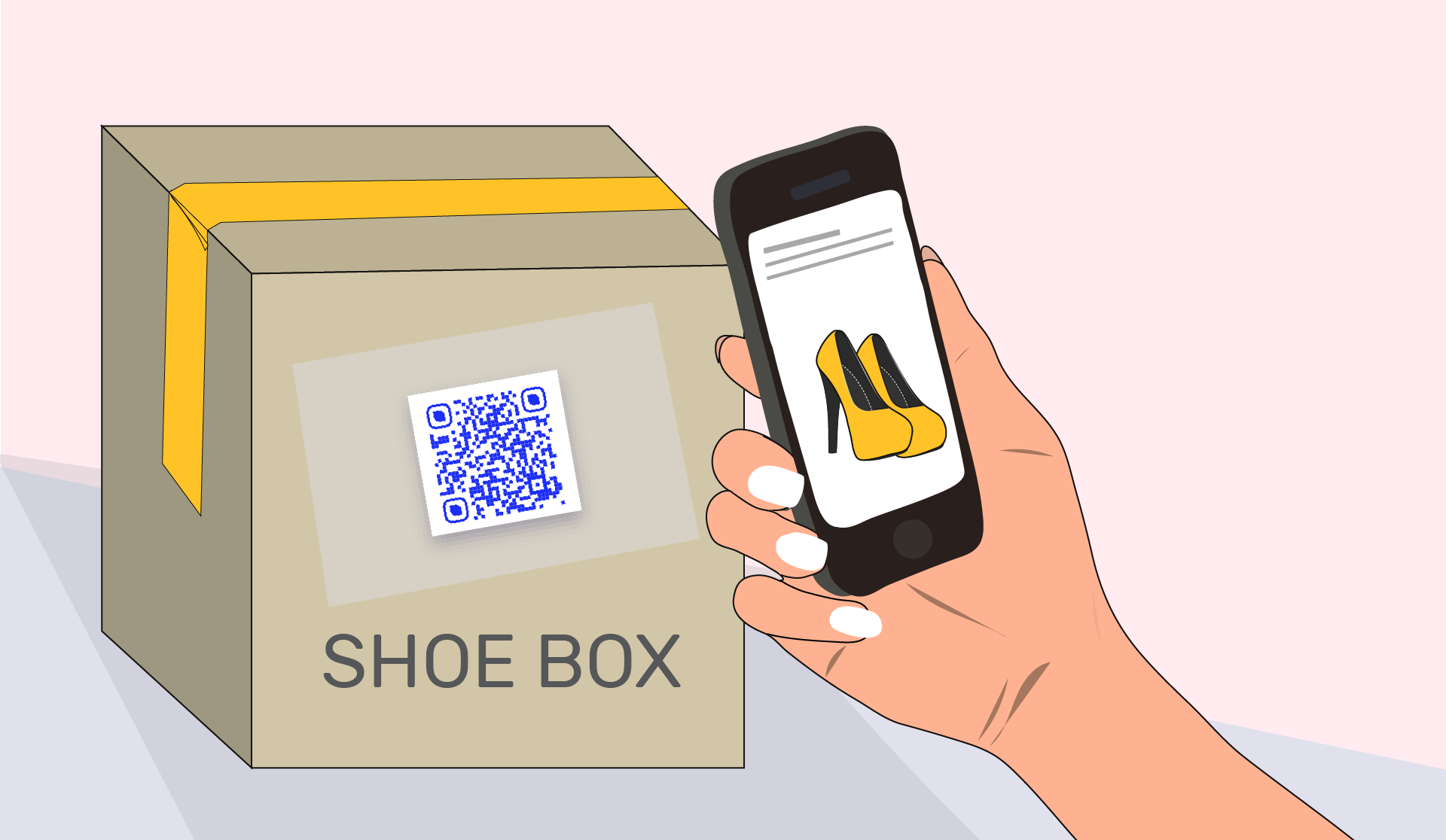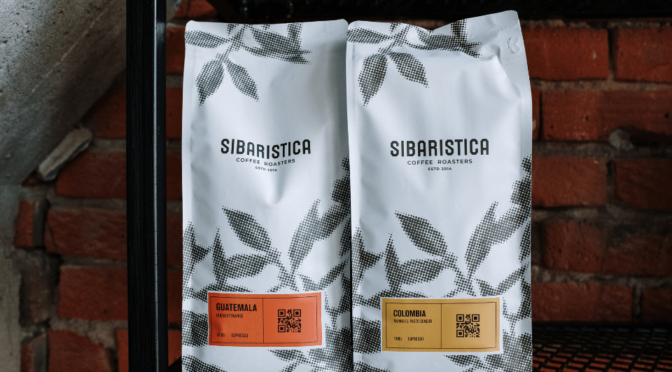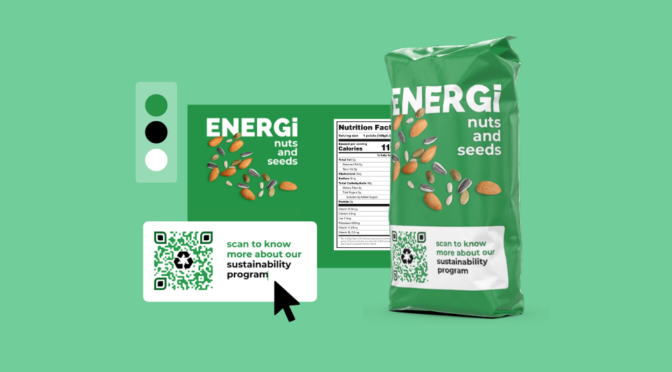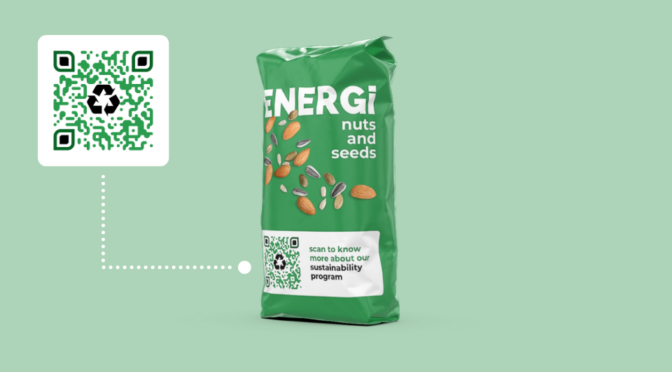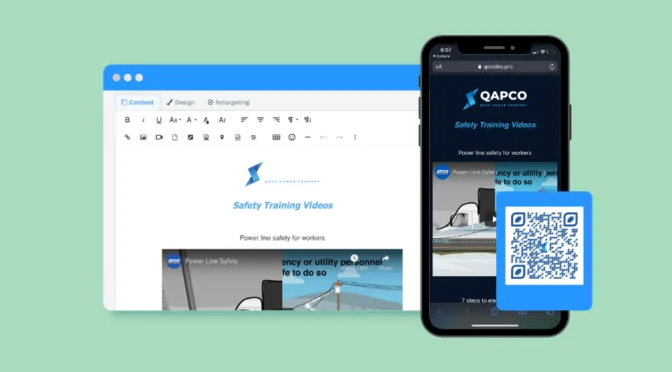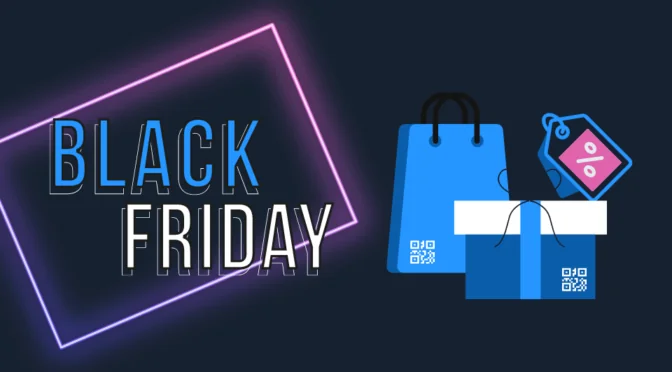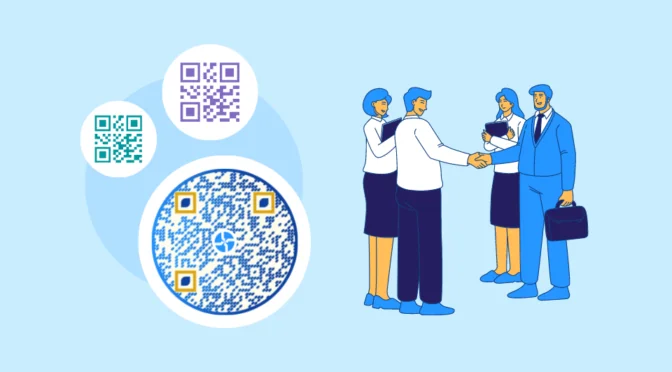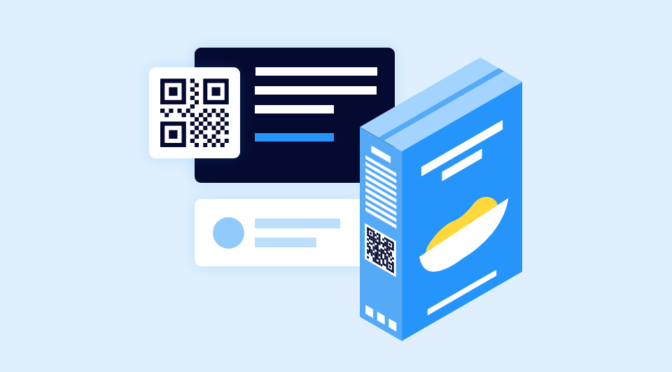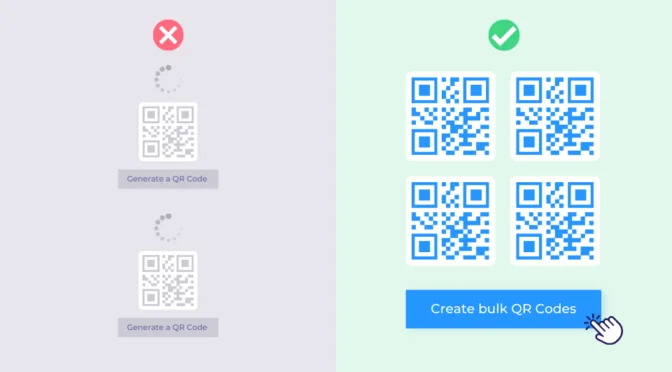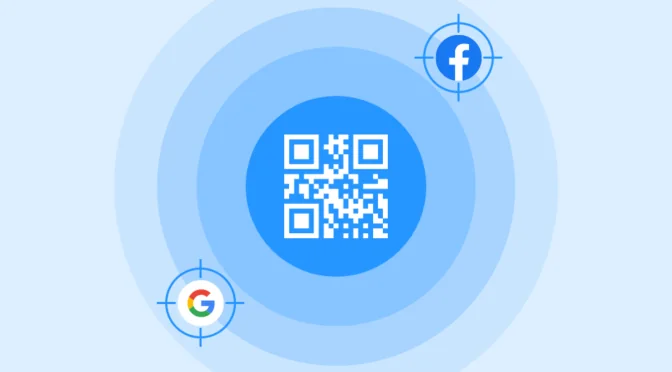What is a product QR Code?
A product QR Code is a scannable code placed on the packaging that provides customers with instant access to product information that’s important to them.
Customers can scan a product QR Code with their mobile devices to view details such as product features, usage instructions, and special offers. The QR Code acts as a digital extension of the physical packaging, which limits how much information you can put on it. You can point customers to any destination, such as review pages, feedback forms, questionnaires, or customer support, enhancing convenience and improving the overall experience.
Table of Contents
- What is a product QR Code?
- 8 ways to boost sales and customer retention with product QR Codes
- How global brands are killing it with product QR Codes
- How to create a product QR Code
- Best practices to use product QR Codes
- Frequently asked questions
8 Ways to boost sales and customer retention with product QR Codes
- Offer additional product information to build trust
Customers today expect brands to be transparent about what they sell—what’s in a product, where the ingredients come from, and how it fits their values.
Using QR Codes for product information instantly lets you deliver that information, from ingredient sources to certifications and lab reports. Maesa, a beauty incubator brand, uses Uniqode’s QR Code to share certificates of analysis—an industry regulation—for its cannabis-infused product lineup.
Giving customers this level of visibility helps you build trust, encourage faster buying decisions, and repeat business.

For example, Whole Truth Foods uses Uniqode’s QR Codes to link their product packaging directly to detailed lab reports and product pages. Customers can scan the code and verify exactly what they’re buying, which reassures them they’re making informed choices and strengthens their trust in the brand.
🔥How this helps:
- Easy access to in-depth product information fosters customers’ trust
- Detailed information helps reduce hesitations during the buying process
- Transparency can differentiate you from competitors who withhold this kind of data
🧠 Pro tip: Integrate Uniqode’s dynamic QR Codes with Zapier to automate customer trigger notifications.
Once you connect your account, you can set triggers that activate whenever a QR Code on the product package is scanned.
Zapier will automatically send predefined messages to customers based on the triggers you define.
Use this to increase direct and indirect interactions between your brand and customers, creating a seamless and engaging experience.
- Deliver coupons and exclusive deals
In 2023, 92% of U.S. shoppers used coupons or discounts, showing that special deals significantly increased sales. QR Codes for products take it a step further by making these promotions quick and interactive.
Instead of printing static discount codes, you can deliver dynamic, time-sensitive offers through QR Codes, rewarding customer engagement and encouraging them to buy now.

Wendy’s did this to significant effect with their 2019 “Sip & Scan” campaign during their 50th-anniversary celebration. QR Codes on cups and bags unlocked free food offers through the Wendy’s app, which led to a surge in app downloads and more frequent customer visits.
🔥How this helps:
- QR-linked deals can encourage larger purchases and drive impulse buys
- Customers feel valued when they receive personalized or exclusive offers
- You can track and optimize digital promotions through QR Codes
- Encourage app downloads
Getting customers to download an app can be a challenge. QR Codes provide a frictionless way to guide them to your app’s download page from the product packaging.
Once customers have your app, you can engage them with push notifications, personalized offers, and loyalty rewards—all of which keep them returning to your brand.
Pupford, a pet training brand, takes advantage of this by placing Uniqode’s product QR Codes on their packaging. When customers scan the code, they can download Pupford’s training app, which offers tutorials and other valuable resources. This uninterrupted experience enhances the product’s value and fosters long-term loyalty.
🔥How this helps:
- App downloads provide a direct communication channel with your customers
- Apps help deepen customer engagement via value-added features such as tutorials, rewards programs, and notifications
- Customers are more likely to become repeat buyers who actively use your app
- Share product videos and tutorials
Sometimes, a product needs more than instructions to help customers make the most of it. Videos—whether tutorials, demos, or recipes—can demonstrate your product’s uses far more effectively than static text. Product QR Codes provide a quick way for customers to find this content, improving product usage and satisfaction.
Source
For example, Hello Tempayy, a plant-based food company, places QR Codes on their packaging that link to chef-created recipe videos. Customers can scan the code and instantly find ideas for cooking with their products, which helps them feel confident and creative in the kitchen.
🔥How this helps:
- Video tutorials eliminate confusion around product use and enhance the overall experience
- Customers get inspired to use your product in new ways, increasing their engagement
- Positive product experiences increase the chances of word-of-mouth referrals
- Boost post-purchase engagement
U.S. providers lose $168 billion a year due to customer churn, which shows that keeping customers is just as important as acquiring new ones.
Product QR Codes can help you maintain engagement after the purchase by offering reordering options, additional content, or view to member-only perks. These features can significantly increase brand loyalty and drive repeat sales.
Uncorked Jamaica, a small wine and cheese business based in Jamaica, used Uniqode to create QR Codes for complimentary fridge magnets for each order. Users can scan the QR Code to view their takeaway menu and order from home.
In another example, the alcohol brand Haus includes QR Codes on its bottles to deliver engagement. Scanning the code takes customers to curated playlists, product stories, and cocktail recipes. This rich, interactive experience makes customers feel more connected to the brand, increasing their likelihood of becoming repeat buyers.
🔥 How this helps:
- It makes reordering quick and straightforward, reducing friction for future purchases
- Keeps your brand top-of-mind by offering continuous value
- Strengthens emotional connections by providing lifestyle-driven content
- Enable instant checkouts with scan-and-go
Long checkout lines can sour even the most enjoyable shopping experience. Nearly one out of four consumers report feeling frustrated when waiting in line.
Product QR Codes can allow customers to scan and pay for items from their phones, saving time and reducing in-store frustration. This level of convenience can significantly improve in-store sales and customer satisfaction.
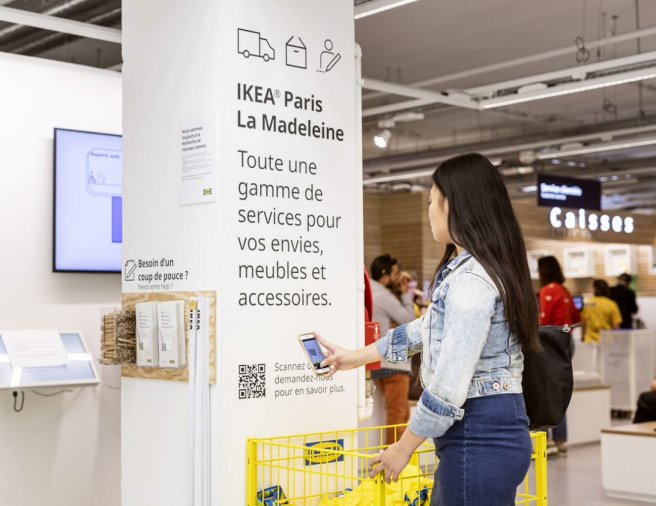
Ikea, for example, uses this technology through its Mobile Checkout feature. Shoppers can scan items, pay via phone, and avoid standing in line. This smoother checkout process encourages customers to return for future visits.
🔥 How this helps:
- Reduces wait times and improves the in-store experience
- Encourages faster purchasing decisions by eliminating friction
- Increases operational efficiency by allowing staff to focus on other tasks
- Enhance loyalty programs
Sixty-five percent of a company’s business is initiated from existing customers. Not just that, increasing customer retention by even 5% can boost profits by 25% to 95%.
Loyalty programs are essential for driving this growth by rewarding loyal customers and encouraging ongoing engagement. QR Codes make these programs more accessible and interactive, allowing customers to enroll, collect points, and redeem rewards quickly.
Starbucks demonstrates this effectively with its mobile app, where QR Codes are scanned at checkout to apply loyalty points instantly. Customers can also track their rewards and access personalized offers, which keeps them engaged and returning more frequently.
🔥 How this helps:
- QR-based loyalty programs increase participation by reducing enrollment barriers
- Customers are more likely to return when they feel rewarded for their loyalty
- Personalized rewards and promotions improve customer engagement and spending
- Collect and analyze data for business insights
Dynamic QR Codes on product packaging provide you with real-time data insights. This data can reveal customer scanning behavior, track product performance, and identify opportunities to optimize marketing strategies.
For example, retailers can analyze scan data to track product popularity, identify supply chain inefficiencies, and reduce losses from theft or damage. UPS estimates that 1% of shipments are lost or damaged; by integrating QR Codes, brands can reduce these risks and improve operational efficiency.
🔥 How this helps:
- Understand customer engagement and product interactions
- Track and monitor product usage and performance across different regions
- Identify supply chain bottlenecks and inefficiencies to improve profitability
- Enhance security by reducing product loss and theft through scannable monitoring
Learn more about how to track and collect QR Code data: Create trackable QR Codes and monitor scan data.
How global brands are killing it with product QR Codes
Learn from some of the best in the business who’re nailing QR Codes on packaging:
- Hershey’s QR Codes keep things transparent
SmartLabel QR Codes on Hershey’s Kisses packaging reveal a full breakdown of ingredients, nutrition facts, and allergen warnings. There’s even an option to contact a Hershey’s rep directly for any extra questions.
This move helps build trust by giving customers all the facts upfront, making snack time a lot more reassuring.
- Coca-Cola shakes things up with dynamic QR Codes
Coca-Cola added dynamic QR Codes to its products to offer fresh, rotating content with each scan. Depending on the day and location, customers might get a surprise offer, a personalized message, or access to events.
Every product scan now feels like a discovery, offering customers a fun and interactive experience that keeps them engaged with the brand.
- Huhtamaki cups help boost recycling efforts
Huhtamaki UK placed QR Codes on their coffee cups to inform customers about local recycling programs. The idea is to encourage sustainable habits by making recycling options easy to find. The QR Code on the cups helped them list all the recycling schemes in the UK to promote conscious living.
“The cup aesthetic is a vital contributor to the overall drinking experience, but we also wanted to do more to help communicate the recycling message,” said Becci Eplett, marketing manager for Huhtamaki UK.
- Pizza Hut mixes retro vibes and AR with Pac-Man
Pizza Hut’s Newstalgia campaign is bringing Pac-Man back with a tech twist. Limited-edition pizza boxes come with QR Codes that launch an augmented-reality version of the game. Players who share their high scores on X (formerly Twitter) can enter to win a custom Pac-Man game cabinet.
With Craig Robinson featured in a new TV ad, the campaign hits both the nostalgia factor and the rise in interactive dining experiences.
- Cinemark’s Gladiator II popcorn bucket adds AR battles
Cinemark is going all-in on movie merch with a Gladiator II-themed popcorn bucket shaped like the Roman Colosseum. Scanning the QR Code on the bottom unlocks an AR gladiator battle on customers’ phones.
The marketing copy leans into the drama with lines like, “Every kernel of strength, every ounce of honor, is for the glory of Rome. Preside over the arena… and eat war.” It’s a mix of fun and over-the-top theatrics that enhances the movie experience.
Also see: Augmented reality and QR Codes—What you need to know
How to create product QR Codes for smart packaging
QR Codes for smart packaging can be created in less than five minutes with these simple steps –
Step 1 – Go to Uniqode’s QR Code generator

Go to Uniqode’s dynamic QR Code generator and select dynamic QR Codes.
Step 2 – Set up

Choose the type of QR Code – website, landing page, or even coupons. Enter the details to be linked with the QR Code.
Step 3 – Customize the QR Code

Customize the QR Code based on your requirements. Change the color, eyes, or add a logo to make sure it stands out and let customers know about its purpose.
We suggest enabling the GPS function so you can analyze the scans and their locations to retarget the audience accordingly.

Step 4 – Generate and test the QR Code
Once you customize the QR Code, generate and test the QR Code for its proper workability and functionality.
Step 5 – Download the QR Code

Download the QR Code in any of the formats – JPG, PNG, or SVG.
💡 Pro Tip: Create QR Codes in bulk to save time and streamline large-scale packaging needs!
Generating individual QR Codes for hundreds of packages can be inefficient. Instead, use Uniqode’s Bulk QR Code Generator to speed up the process.
Learn how to create QR Codes in bulk!
Best practices to use product QR Codes
1. Add colorful QR Codes:
- The more colorful and vibrant your QR Codes are, the more people will scan them and engage with your product.
2. Make sure it is scannable:
- Do not add colors that render the QR Code unreadable. Always test the QR Code on product packaging before printing it out. Also, ensure that the QR Code you print out is not too small to be scanned (at least 2 cm x 2 cm).
3. Include a compelling CTA:
- Always add a CTA that makes consumers want to scan your QR Codes.
4. Focus on placement:
- Ensure your product QR Code is not placed on a fold or corner. It should be front and center and easy to spot.
Boost sales and build trust with QR Codes on product packaging!

Customers today expect instant product details, offers, and personalized experiences. Product QR Codes deliver this convenience, providing key information, promotions, tutorials, and more to enhance engagement, build trust, and drive repeat purchases.
With Uniqode, you can create dynamic, customizable QR Codes—complete with real-time analytics and bulk generation—tailored to your needs and join the league of global brands that have aced their marketing game!
Dynamic QR Codes offer several advanced features:
- Real-time updates: Change the content linked to the QR Code without reprinting it.
- Personalized user experiences: Display different content based on the user’s location, time, or device.
- Analytics: Track scans by date, location, and device type to optimize marketing efforts.
- A/B testing: Run experiments by linking various QR destinations to find what works best.
- Bulk creation: Generate thousands of QR Codes efficiently, perfect for large-scale campaigns.
Sign up for our 14-day free trial today—No credit card required!
Frequently asked questions
1. How do I get a QR Code for my product?
Use Uniqode’s QR Code generator to create a QR Code. Download the QR Code and print it to be placed on the product. We suggest placing the QR Code on the back of the visible and scannable product for easy usage.
2. What is the purpose of a QR Code on a product label?
QR Codes on product labels are mainly used to test the authenticity of the product, its origin, manufacturing process, expiration date, and any further information regarding the product.
3. How can QR Codes be used for product identification?
Place QR Codes on the products or product labels and encourage customers to scan them to be redirected to a dedicated webpage to check for authenticity and correct identification.
4. How to employ QR Codes for product tracking?
Leverage dynamic QR Codes for product tracking. Place the dynamic QR Codes on product packaging and integrate them with analytics. Every time a user scans the QR Code on the product package, the scanning location, the device used, and the scan date are tracked using analytics.
5. How to use QR Code for product information?
When scanned, QR Codes on product packaging and labels can redirect users to a landing page that contains the product’s information and insights. (For more information, see QR Code landing pages.)Want to create QR Codes for your product packaging? Sign up for our 14-day free trial today to know more.







